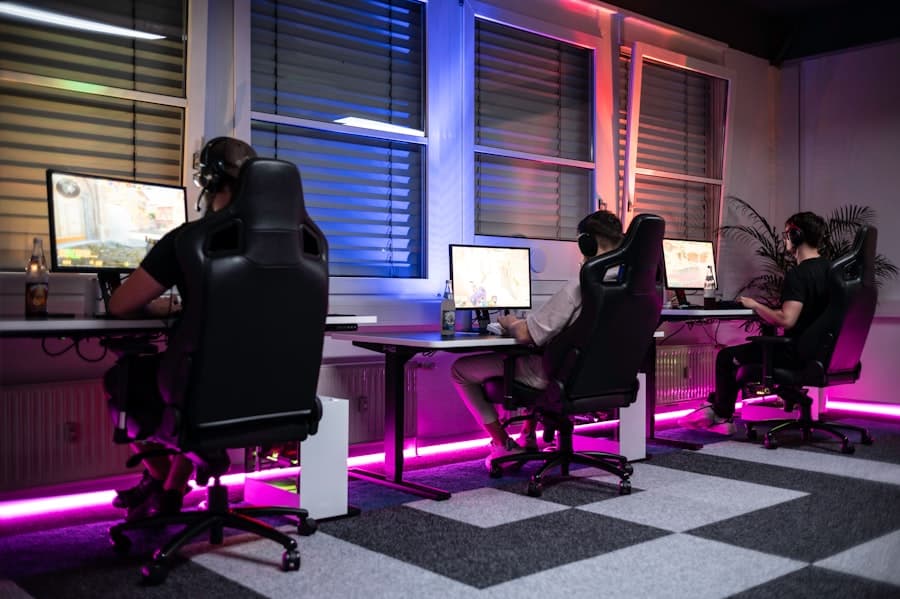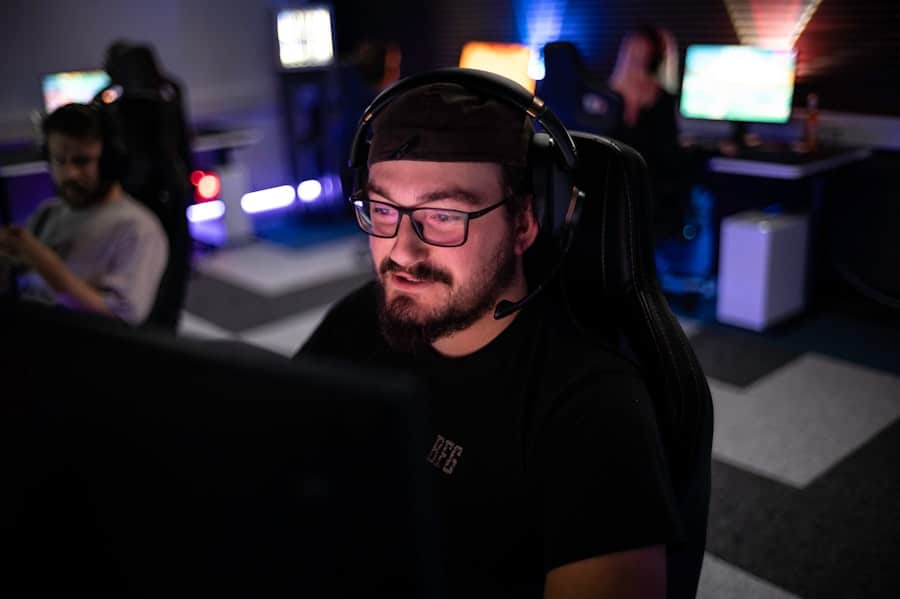The concept of the metaverse has evolved significantly over the past few years, transitioning from a niche idea in science fiction to a burgeoning reality that is reshaping the landscape of virtual gaming communities. Initially popularized by novels like Neal Stephenson’s “Snow Crash” and Ernest Cline’s “Ready Player One,” the metaverse is now being realized through advancements in technology, particularly in virtual reality (VR), augmented reality (AR), and blockchain. These technologies have enabled immersive experiences that allow players to interact in expansive digital environments, creating a sense of presence and community that transcends geographical boundaries.
As gaming platforms increasingly incorporate elements of the metaverse, players are finding themselves not just as participants in games but as active members of vibrant virtual societies. Titles such as “Fortnite,” “Roblox,” and “Minecraft” have become more than mere games; they are social hubs where users can create, share, and collaborate. These platforms facilitate a new form of social interaction, where players can attend concerts, participate in events, and even engage in commerce—all within a digital realm.
This shift has led to the emergence of virtual gaming communities that are rich in culture and diversity, reflecting the varied interests and backgrounds of their members.
Key Takeaways
- The metaverse is a virtual gaming community that is rapidly growing in popularity, offering a new way for people to connect and interact.
- Understanding the diverse landscape of the metaverse is crucial for navigating virtual worlds and engaging with different gaming cultures.
- Building relationships and socializing in virtual communities is a key aspect of the gaming experience in the metaverse.
- Exploring diversity and inclusion in the metaverse allows for a deeper understanding of different gaming cultures and the opportunity to create more inclusive virtual spaces.
- The economy of the metaverse revolves around virtual goods and services, creating opportunities for trade and commerce within gaming communities.
Navigating Virtual Worlds: Understanding the Metaverse Landscape
The metaverse is not a singular entity but rather a complex tapestry of interconnected virtual worlds, each with its own unique characteristics and user experiences. Navigating this landscape requires an understanding of various platforms and technologies that contribute to the overall metaverse experience. For instance, VR platforms like Oculus Rift and HTC Vive offer immersive environments where players can physically move and interact with their surroundings, while AR applications like Pokémon GO blend digital elements with the real world, encouraging exploration and social interaction in physical spaces.
Moreover, the metaverse is characterized by its decentralized nature, with blockchain technology playing a pivotal role in enabling ownership and trade of virtual assets. Non-fungible tokens (NFTs) have emerged as a significant component of this ecosystem, allowing players to buy, sell, and trade unique digital items such as skins, avatars, and virtual real estate.
As players navigate these diverse environments, they encounter various gaming genres, from role-playing games (RPGs) to simulation games, each offering distinct opportunities for engagement and interaction.
The Social Aspect of Gaming: Building Relationships in Virtual Communities

One of the most compelling aspects of the metaverse is its ability to foster social connections among players. In traditional gaming settings, interactions often occur within the confines of competitive gameplay; however, the metaverse encourages collaboration and community-building. Players can form friendships through shared experiences, whether they are embarking on quests together or simply hanging out in virtual spaces.
This social dynamic is particularly evident in games like “Animal Crossing: New Horizons,” where players can visit each other’s islands, trade items, and participate in seasonal events. The social aspect of gaming extends beyond mere interaction; it also plays a crucial role in mental well-being. Many players find solace in virtual communities, especially during times of isolation or uncertainty.
The metaverse provides a platform for individuals to express themselves, share their stories, and connect with others who share similar interests. For example, during the COVID-19 pandemic, many turned to virtual worlds for socialization, attending online events and gatherings that replicated real-life experiences. This phenomenon highlights the metaverse’s potential as a space for emotional support and community engagement.
Diversity and Inclusion in the Metaverse: Exploring Different Gaming Cultures
As the metaverse continues to grow, it becomes increasingly important to address issues of diversity and inclusion within virtual gaming communities. The global nature of these platforms means that players from various cultural backgrounds come together, bringing their unique perspectives and experiences into the digital realm. This diversity enriches the gaming experience but also presents challenges related to representation and inclusivity.
Many game developers are recognizing the importance of creating inclusive environments that reflect the diversity of their player base. Initiatives aimed at promoting representation—such as featuring characters from different ethnic backgrounds or incorporating diverse narratives—are becoming more common. Additionally, community-driven efforts often emerge to advocate for inclusivity within gaming spaces.
For instance, organizations like “Women in Games” work to empower female gamers and developers by providing resources and support networks. By fostering an inclusive atmosphere, the metaverse can become a space where all players feel valued and represented.
The Economy of the Metaverse: Virtual Goods and Services in Gaming Communities
The economic landscape of the metaverse is rapidly evolving, driven by the demand for virtual goods and services that enhance the gaming experience. Players are increasingly willing to invest real money into digital assets that hold value within these virtual worlds. This trend has given rise to a thriving marketplace for items such as skins, weapons, and virtual real estate.
In some cases, these transactions can reach staggering amounts; for example, a virtual plot of land in “Decentraland” sold for over $900,000 in 2021. The economy of the metaverse is not limited to individual transactions; it also encompasses broader economic systems that mirror real-world dynamics. Players can engage in entrepreneurship by creating and selling their own digital products or services within these communities.
For instance, artists can design custom avatars or skins for other players, while developers can create mini-games or experiences that generate revenue through microtransactions.
Challenges and Opportunities: The Future of Gaming in the Metaverse

As the metaverse continues to expand, it faces both challenges and opportunities that will shape its future trajectory. One significant challenge is ensuring user safety and security within these digital environments. With the rise of virtual interactions comes an increased risk of harassment, scams, and other negative behaviors that can detract from the gaming experience.
Developers must implement robust moderation systems and community guidelines to foster safe spaces for all players. On the other hand, the opportunities presented by the metaverse are vast. As technology advances, we can expect even more immersive experiences that blur the lines between reality and virtuality.
Innovations such as haptic feedback suits could enhance physical sensations within games, while AI-driven NPCs may create more dynamic interactions with players. Furthermore, as businesses recognize the potential of virtual spaces for marketing and engagement, we may see an influx of partnerships between brands and gaming communities that enrich the overall experience.
Ethical Considerations in Virtual Gaming: Addressing Issues of Behavior and Conduct
The rise of the metaverse brings forth important ethical considerations regarding behavior and conduct within virtual gaming communities. As players interact with one another in increasingly immersive environments, issues such as harassment, toxicity, and discrimination become more pronounced. Developers face the challenge of creating systems that not only discourage negative behavior but also promote positive interactions among users.
One approach to addressing these ethical concerns is through community-driven initiatives that empower players to take an active role in shaping their environments. For example, many games now incorporate reporting systems that allow users to flag inappropriate behavior or content. Additionally, educational programs aimed at promoting digital citizenship can help foster a culture of respect and inclusivity within gaming communities.
By prioritizing ethical considerations alongside technological advancements, developers can create healthier virtual spaces that enhance player experiences.
The Impact of the Metaverse on Traditional Gaming: Bridging the Gap Between Virtual and Physical Communities
The emergence of the metaverse is having a profound impact on traditional gaming paradigms, bridging the gap between virtual experiences and physical communities. As players increasingly seek social interaction within digital realms, traditional gaming companies are adapting their strategies to incorporate elements of the metaverse into their offerings. This shift is evident in the rise of hybrid events that combine physical gatherings with virtual components—such as esports tournaments that allow remote participation through live streaming.
Moreover, traditional game developers are exploring ways to integrate augmented reality into their titles, creating experiences that encourage players to engage with their surroundings while still enjoying gameplay. For instance, games like “Ingress” have successfully blended real-world exploration with digital objectives, prompting players to interact with their local communities in new ways. As these trends continue to evolve, we can expect a future where traditional gaming coexists harmoniously with metaverse experiences, enriching both realms for players around the globe.
In summary, the rise of the metaverse represents a transformative shift in how we engage with virtual gaming communities. As we navigate this complex landscape filled with opportunities for social connection, economic growth, diversity, and ethical considerations, it becomes clear that the future of gaming will be shaped by our collective experiences within these digital realms.
In the ever-evolving landscape of digital interaction, gaming communities in the metaverse are becoming increasingly significant. These virtual spaces offer immersive experiences that foster social connections and creativity among players worldwide. A related article that delves into the broader digital trends shaping our online experiences is Top Trends on YouTube 2023. This article explores how platforms like YouTube are adapting to new technologies and user behaviors, which parallels the transformative impact of the metaverse on gaming communities. Both pieces highlight the dynamic nature of digital platforms and their role in shaping modern social interactions.
FAQs
What is the Metaverse?
The Metaverse is a collective virtual shared space, created by the convergence of virtually enhanced physical reality and physically persistent virtual reality. It is a concept that has gained popularity in the gaming and tech industries.
What are gaming communities in the Metaverse?
Gaming communities in the Metaverse are groups of gamers who come together in virtual spaces to interact, play games, and socialize. These communities can be formed around specific games, genres, or interests.
How do gaming communities in the Metaverse interact?
Gaming communities in the Metaverse interact through virtual avatars, chat functions, voice communication, and in-game activities. They can also organize events, tournaments, and other social gatherings within the virtual space.
What are the benefits of joining gaming communities in the Metaverse?
Joining gaming communities in the Metaverse can provide a sense of belonging, opportunities for social interaction, and a platform for collaborative gaming experiences. It also allows gamers to connect with like-minded individuals from around the world.
Are there any risks associated with gaming communities in the Metaverse?
As with any online community, there are potential risks such as cyberbullying, harassment, and exposure to inappropriate content. It’s important for users to be mindful of their online interactions and to report any abusive behavior to the platform administrators.

